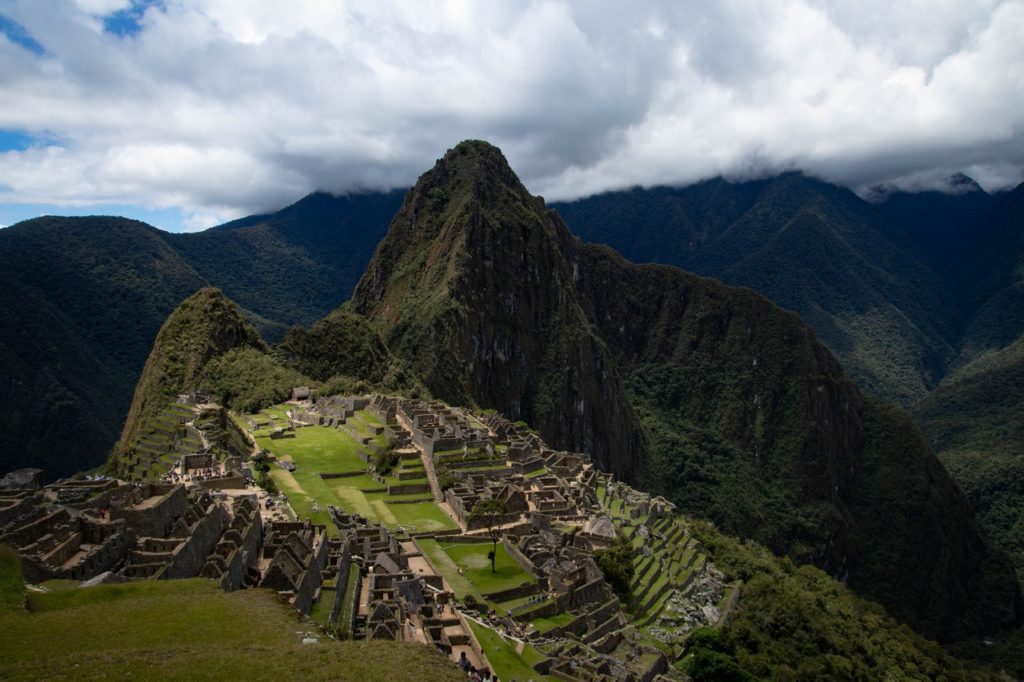
I learned this today. Machu Picchu was most likely a royal estate for Inca emperors and nobles that was probably built in the 1420s and abandoned a little over 100 years later.
The Incas had no written language, so all information about the site has been deduced by modern archaeology.
The Incan Empire came into being in 1438, when a large number of Andean tribes were assimilated. It survived intact until 1526 when the Spanish invaded. Their conquest lasted over 40 years and the last Inca city was captured in 1572. The last Incan Emperor was captured and beheaded at the same time. So, the Inca Empire didn’t quite last 150 years.
Machu Picchu was thought to have been built in 1450. This date was based on historical records that were written down by the Spanish conquistadors. It is unclear how they came by this date, but radiocarbon dating of Machu Picchu shows that the site was occupied from 1420. This date was found by using accelerator mass spectrometry (AMS) radiocarbon dating on the teeth and bones of 26 people found in burial sites on Machu Picchu. AMS works by analyzing the radioactive isotope carbon-14. It stops accumulating in bones when a living thing dies and decays at a known rate. By looking at it, it is possible to work out how old bones are.
Archeologists believe that the site was probably ordered by the Inca ruler Pachacuti Inca Yupanqui who lived from 1418 to 1471. However, if the radiocarbon dating analysis is correct, then he either couldn’t have ordered it because he was two years old, or the dates for his life and those of the Inca Empire are probably suspect. This is probably more likely, and it means that the age of the Inca Empire can be revised back by two decades.
Pachacuti succeeded his father as the 9th ruler of the Inca state. Once he took over, he started to assimilate other tribes through conquest and turned the tribe he inherited into the Incan Empire. His son, Tupac Inca Yupanqui, and his grandson, Huayna Capac continued extending the empire.
So, why was Machu Picchu built? It seems that it was built as a royal retreat for the Inca, the new leader of the Inca Empire. It is built on a ridge that is 2,430m high, and building something somewhere so difficult would have been fitting for a new emperor keen to show his power. Somewhere that high would also put the Inca closer to the sun god. Machu Picchu has a temple of the sun, which has windows aligned to the winter and summer solstices. The sun shines through and lights a specific spot carved on a sacred rock.
Approximately 750 people would probably have lived and worked at Machu Picchu. Most of them would have been support staff or worked in the temple. It is unclear how often the emperors would have come to visit.
Once the Spanish invaded South America in 1519, they started to head farther south, and they brought smallpox with them. The Spanish didn’t meet the Incas for a few years, and it seems they never reached Machu Picchu while the Incas were still there, but their disease traveled ahead of them. Smallpox nearly wiped out the Incas, killing 90%, and it caused civil war amongst the ones left. Sick, and divided, they put up no resistance to the Spanish conquistadors, and their empire ended in 1572.
The people who lived at Machu Picchu would have been mostly wiped out by disease and moved off the mountain when it became too difficult to live there. And then Machu Picchu was forgotten. It was slowly covered up by the jungle and remained that way for almost 340 years.
Machu Picchu was discovered in 1911 by Hiram Bingham III. He was an American archaeologist and he had traveled to Peru looking for the last capital city of the Incas. On his expedition he did find Victos and Vilcabamba. Vilcabamba was the last capital of the Inca Empire. The ruling class moved there when the Inca Empire began to fall to the invading Spaniards and the city lasted from 1539 to 1572, at which point the Spanish conquered it. However, when Bingham found it, he didn’t think that it was the last capital city and he carried on. When he found Machu Picchu on top of the mountain, he figured that it must be the last capital. This assumption stayed until late in the 20th century. (As a side note, it seems that Hiram Bingham III wasn’t the first person to find Machu Picchu. It appears that a German called Augusto Berns found it in the 1860s and tried to raise money to plunder it. He may or may not have managed to plunder anything because he couldn’t raise any money.)
After Bingham found the ruins, he exported 40,000 relics and artifacts that he found at the site. Most of them were kept at Yale University. The Peruvian government finally sued to get them back and won. They were returned to Machu Picchu in 2012. Although, some Peruvian experts think that the university might still be hiding a few artifacts that it doesn’t want to return. And this is what I learned today.
Photo by Paula Nardini from Pexels
Sources
https://en.wikipedia.org/wiki/Machu_Picchu
https://en.wikipedia.org/wiki/Pachacuti
https://en.wikipedia.org/wiki/Pachacuti
https://en.wikipedia.org/wiki/Viracocha_Inca
https://en.wikipedia.org/wiki/Topa_Inca_Yupanqui
https://whc.unesco.org/en/list/274/
https://www.history.com/topics/south-america/machu-picchu
https://www.nationalgeographic.com/adventure/article/machu-picchu-hiram-bingham
https://en.wikipedia.org/wiki/Hiram_Bingham_III
https://www.britannica.com/place/Machu-Picchu
https://www.nationalgeographic.com/travel/article/secrets
https://www.peru.travel/en/attractions/machu-picchu
https://www.livescience.com/machu-picchu-older-than-thought.html
